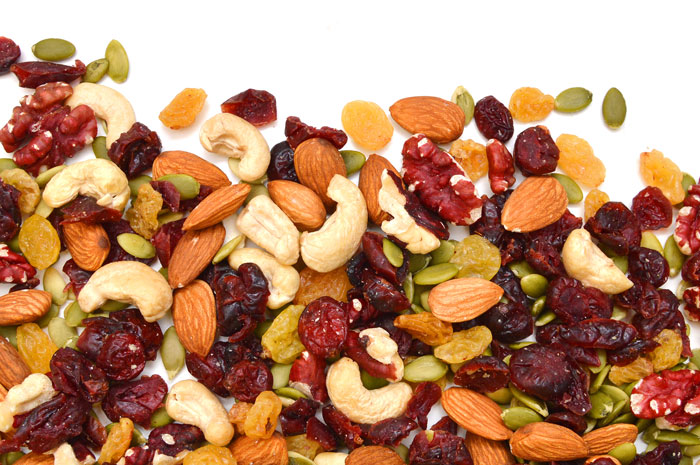How almonds fit with new consumer eating habits
- Like
- Digg
- Del
- Tumblr
- VKontakte
- Buffer
- Love This
- Odnoklassniki
- Meneame
- Blogger
- Amazon
- Yahoo Mail
- Gmail
- AOL
- Newsvine
- HackerNews
- Evernote
- MySpace
- Mail.ru
- Viadeo
- Line
- Comments
- Yummly
- SMS
- Viber
- Telegram
- Subscribe
- Skype
- Facebook Messenger
- Kakao
- LiveJournal
- Yammer
- Edgar
- Fintel
- Mix
- Instapaper
- Copy Link
Posted: 27 June 2017 | Almond Board of California | No comments yet
A versatile ingredient, nuts account for a rising share of new product launches in the ever-evolving global snacks category. In this article, the Almond Board of California investigates the factors driving the growth of this ingredient.


According to Innova Market Insights, snack nuts and seeds, like trail mixes, accounted for over 30% of snack launches in 2016, up from 26. 5% five years previously. Factors driving that growth include new research on nuts’ health attributes, greater availability of various nut types, and technological advances allowing for new coatings, flavours, and packaging formats. When it comes to snack nuts, almonds fit particularly well with new consumer eating habits, changing tastes, and various trends. In fact, nearly one-quarter of global snack nut products launched in 2016, featured almonds as an ingredient and they were the number one nut in new product introductions in Europe with a 48% regional share.
Limitless flavour
The range of snacks featuring almonds continues to widen beyond traditional raw or salted nuts to include smoked and caramelised variants that offer limitless potential. Thanks to almonds’ unique ability to blend with and carry such a wide variety of flavours, there are products in the market ranging from more traditional profiles like honey, lemon, and ginger towards exotic and spicy palates such as jalapeno and wasabi. On-trend combinations for almonds continue to evolve the standard for taste, pushing the boundaries of sweet and savoury profiles. Today even Sea Salt & Cracked Pepper, Mint Mocha, and seasonal variants such as Pumpkin Pie, are hitting the mark with consumers.
Premium food pairings
Almonds feature strongly in mixes, not only in company with a range of other premium-style nuts, such as cashews and pecans, but even more so with fruit and seed mixes. These mixes are moving well beyond traditional dried fruit accompaniments, such as raisins, and manufacturers are now mixing almonds with less common single and mixed fruits, super fruits, and seeds. Often inspired by global trends, innovative add-ons include coconut, cottonseed, apricot, goji, mulberry and pineapple.
Momentum in clean label
40% of global snack nut and seed launches (more than 60% in the US) recorded by Innova Market Insights use a health claim of some kind. This research illustrates how the health benefits of nuts, including almonds, continue to resonate. Almonds align seamlessly with today’s relevant health claims like clean label, free from, and gluten free. Gluten free, the leading claim globally, accounted for 12% of launches, many of which included almonds as an ingredient. Furthermore, the clean label platform really encompasses more than just one claim. When natural, no additives/ preservatives, and organic claims are combined, those claims account for 23% of launches. Other key claims aligned with this trend are high in/source of fibre, high in/source of protein, low cholesterol, low sodium, and no trans fats.
Plant-based variety
Rising interest in vegan and plant-based diets continues to drive new product development utilising various nuts, including almonds. While vegan-friendly labelling has risen markedly in recent years, many products using almonds have always been naturally vegan. Just over 6% of global snack nut and seed launches used vegan positioning in 2016, rising to 12% in Western Europe, and to an astonishing 19% in the UK. Alongside vegan friendly positioning, many products are also being created to align with fashionable lifestyle trends, including raw and paleo diets. In the case of plant-based products, almonds are most often utilised to add crunchy texture and visual appeal.
Packaging with purpose
In line with snack packaging in general, packaging of snack nuts is becoming more sophisticated to target new consumers and occasions, offer recyclability, portability, and improved ease-of-use. Although traditional packets and snack bags still dominate shelves, more premium-style stand-up pouches now add value for the working consumer. Shareable tubs and cans with resealable lids are also increasingly common, and the contrasting single-serve sachets with calorie-counted options mean there’s a package for every type of occasion. There is also on-going use of clear packaging or packs with see-through windows for a (literally) clear view of the contents, allowing consumers to see what is inside. For example, almonds’ unique shape and colour make them an attractive visual cue to a wholesome ingredient.
On-the-go and cross-categories
Almonds maintain appeal as a portable snack that is nutritious and delicious but also suitable for in-home between-meals snacking and consumption on-the-go. On-the-go positioning for nuts is now also penetrating the private label sector with products like variety snack packs in various size scales and multi-packs, promoted as ‘perfect for on-the-go snacking’. Although, as might be expected, almonds have their strongest presence in the snack nuts sub-category, they also play a significant role as an ingredient in other snack sub-categories too. Country-specific increases include a 34% increase in new product introductions in France, while Germany has seen a huge 107% increase in spreads. Almonds are the number one nut in the UK leading in four of the five leading categories for almonds, with particular increases of 33% in bakery introductions and 15% in bars. According to Innova, salty snacks led in terms of using almonds as an ingredient, with product launch numbers growing 19% year on year. Most commonly in chopped format, almonds had a wide variety of applications in salty snacks as a filling or coating, or simply for distinct flavour. In the salty snack category, almonds are also commonly used as an ingredient in crackers, thins, and crisp alternatives, usually combined with other nuts, seeds and vegetables. Beyond their textural benefits, almonds’ inherent gluten/wheat-free properties, as well as their relatively low values of fat, make them ideal for salty snack applications like crisp alternatives. When it comes to the cereal and energy bars sub-category, almond flour and almond butter are commonly applied for added texture and flavour. However, across all categories, key industry trends like gluten free and clean label continue to create new market opportunities for snack nuts such as almonds, boosting new product activity.
About the company
At the request of the almond industry, a Federal Marketing Order for almonds was established in 1950. At that time, it dealt primarily with compliance issues, and accordingly, was called the Almond Control Board. In the 1970’s, recognising a need to address market development, the name was changed to the Almond Board of California. While compliance is still a crucial part of its activities, the Board now engages in production, nutrition and market research, advertising and promotion in domestic and international markets, quality control and statistical analysis and dissemination.









